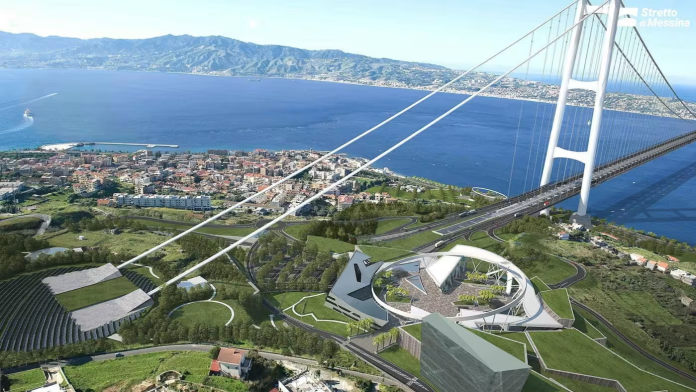Italy’s government granted final approval for the €13.5 billion Messina Strait Bridge, set to become the world’s longest suspension span at 3.3 kilometres, linking Sicily to the mainland, Euractiv reported.
Deputy Prime Minister Matteo Salvini confirmed the state-funded project will proceed as a “page in history,” promising transformative economic benefits for southern Italy despite fierce environmental and fiscal criticism.
The engineering marvel, slated for completion by 2032, features twin railway tracks flanked by six traffic lanes, suspended between 400-metre towers. Designed to withstand seismic activity and high winds in the tectonically volatile strait, it represents a flagship of Italian infrastructure ambition. The Eurolink consortium, led by Italian firm Webuild and contracted since 2006, will execute the revived project.
Rome aims to classify portions of the bridge’s cost under NATO’s expanded defence spending framework. Under US pressure, Italy committed to allocating 5% of GDP to defence and security by 2035, with 1.5% permissible for “security-related infrastructure” like transport networks and critical resilience projects.
Sicily’s hosting of the NATO Sigonella naval air station, a key Mediterranean hub, bolsters this justification, aligning the bridge with goals to “protect critical infrastructure” under the alliance’s new guidelines.
This accounting manoeuvre alleviates pressure on Italy’s strained finances. With public debt expected to reach 137% of GDP by the end of 2025, traditional defence hikes risk unpopular austerity. Salvini’s cabinet previously reached NATO’s 2% target only by including military pensions and coastguard costs, a tactic now extended to infrastructure.
However, environmental groups warn of irreversible damage to marine ecosystems and migratory bird routes. Fiscal critics argue €13.5 billion could modernise existing southern infrastructure rather than fund a “vanity project.” Historians note Italy’s chronic megaproject failures – initial blueprints for the bridge emerged over 50 years ago, with a 2006 tender scrapped amid the eurozone crisis.
